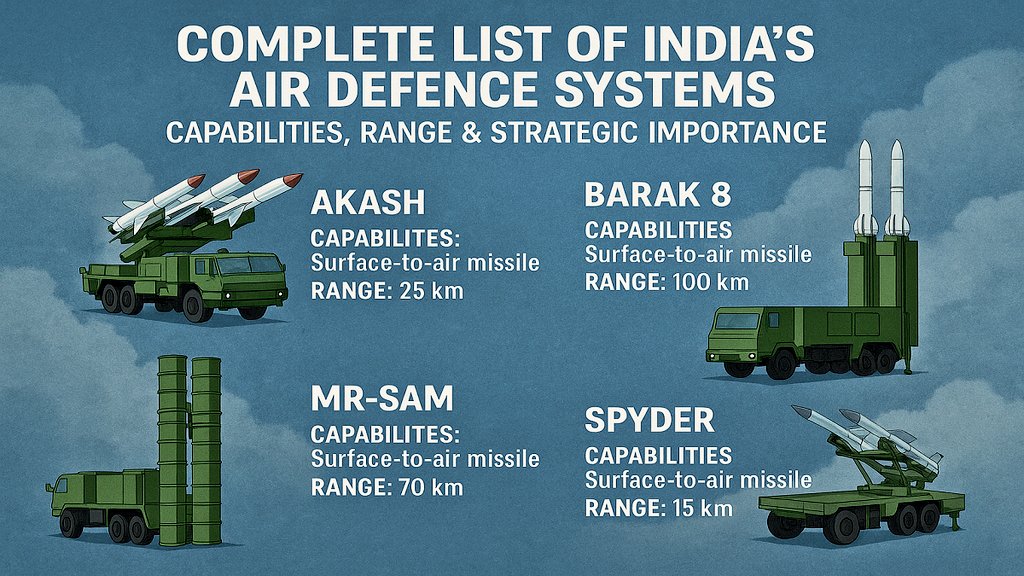Context:
India's recently neutralised air defence system in Lahore, Pakistan. This underscores the strategic significance of such systems in contemporary conflicts.
About Air Defence Systems:
- A modern air defence system is a networked, multilayered setup integrating diverse technologies to ensure robust protection and deny enemy aerial dominance, thereby granting operational flexibility to ground and air forces. Pakistan's recent failure to damage Indian targets in a cross-border attempt underscores their strategic importance.
- Conversely, neutralising enemy air defences through Suppression of Enemy Air Defences (SEAD) operations is vital for securing air superiority, enabling uninterrupted bombing runs, paratrooper deployments, and logistical support. According to a 2005 U.S. Congressional study, around 25% of American combat sorties in recent conflicts were SEAD missions. India’s targeting of air defence systems in Lahore reflects a similar strategic calculus.
Components and Functionality:
1. Detection: The initial and most crucial step, detection, is primarily conducted via radar systems that emit electromagnetic waves. Reflected signals from objects like enemy aircraft or missiles help determine their location, speed, and trajectory. In strategic cases, satellites assist in tracking long-range threats such as ICBMs.
2. Tracking: Post-detection, continuous tracking uses advanced radar, infrared sensors, and laser rangefinders to monitor multiple aerial objects in real-time, distinguishing hostile targets from friendly ones. Precision in tracking is vital to prevent false positives and ensure timely response.
3. Interception: Once a threat is identified and tracked, it is neutralised through tailored tactical responses based on its type and range. This phase's success hinges on the effective integration of command, control, and communication (C3) systems.
Tools of Interception:
· Fighter Aircraft: These are fast, agile aircraft equipped with advanced air-to-air missiles, radar, and electronic warfare systems. Interceptor roles can be performed by aircraft such as the MiG-21 Bison, MiG-29, Sukhoi Su-30MKI, HAL Tejas, and Dassault Rafale—all currently operational in the Indian Air Force.
· Surface-to-Air Missiles (SAMs): SAMs are the backbone of any air defence network. They are more effective and safer than traditional anti-aircraft artillery (AAA). These missiles can be:
o Heavy, long-range systems (e.g., S-400 Triumf): Target high-altitude threats like ballistic missiles.
o Medium-range mobile systems (e.g., Akash, Barak): Offer operational flexibility.
o Short-range, man-portable systems (MANPADS): Engage low-flying aircraft or drones. These are cost-effective and widely used, even by irregular forces.
· Anti-Aircraft Artillery (AAA): Although outdated in the face of modern missile systems, AAA retains relevance as a last-resort measure and for defending against drones. These guns operate at high rates of fire and cover wide areas using fragmentation shells.
· Electronic Warfare (EW): Modern air defence also leverages non-kinetic methods like jamming, spoofing, and electromagnetic interference. EW systems target the enemy’s radar, guidance, and communications, rendering their platforms ineffective without direct confrontation.
Conclusion:
Air defence systems represent the convergence of surveillance, communication, and strike capabilities. Their role is not confined to defence alone but extends to enabling broader military strategies, including offensive air operations.







